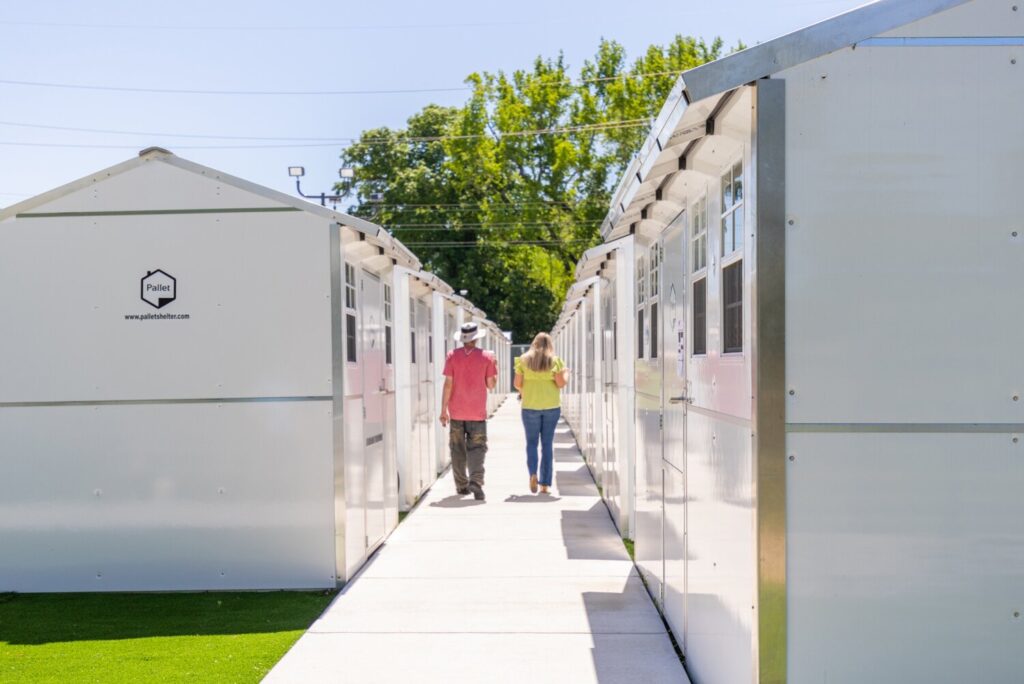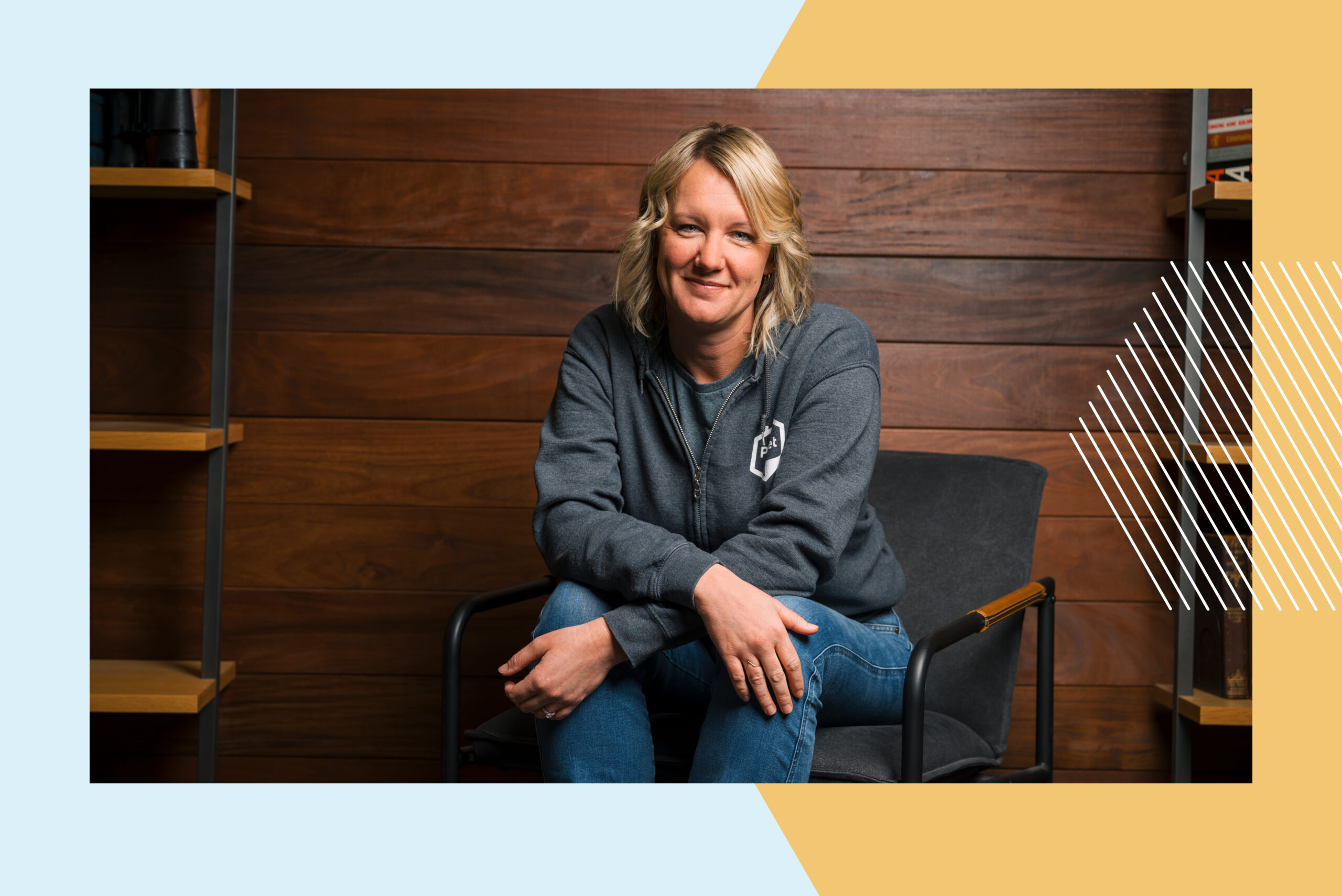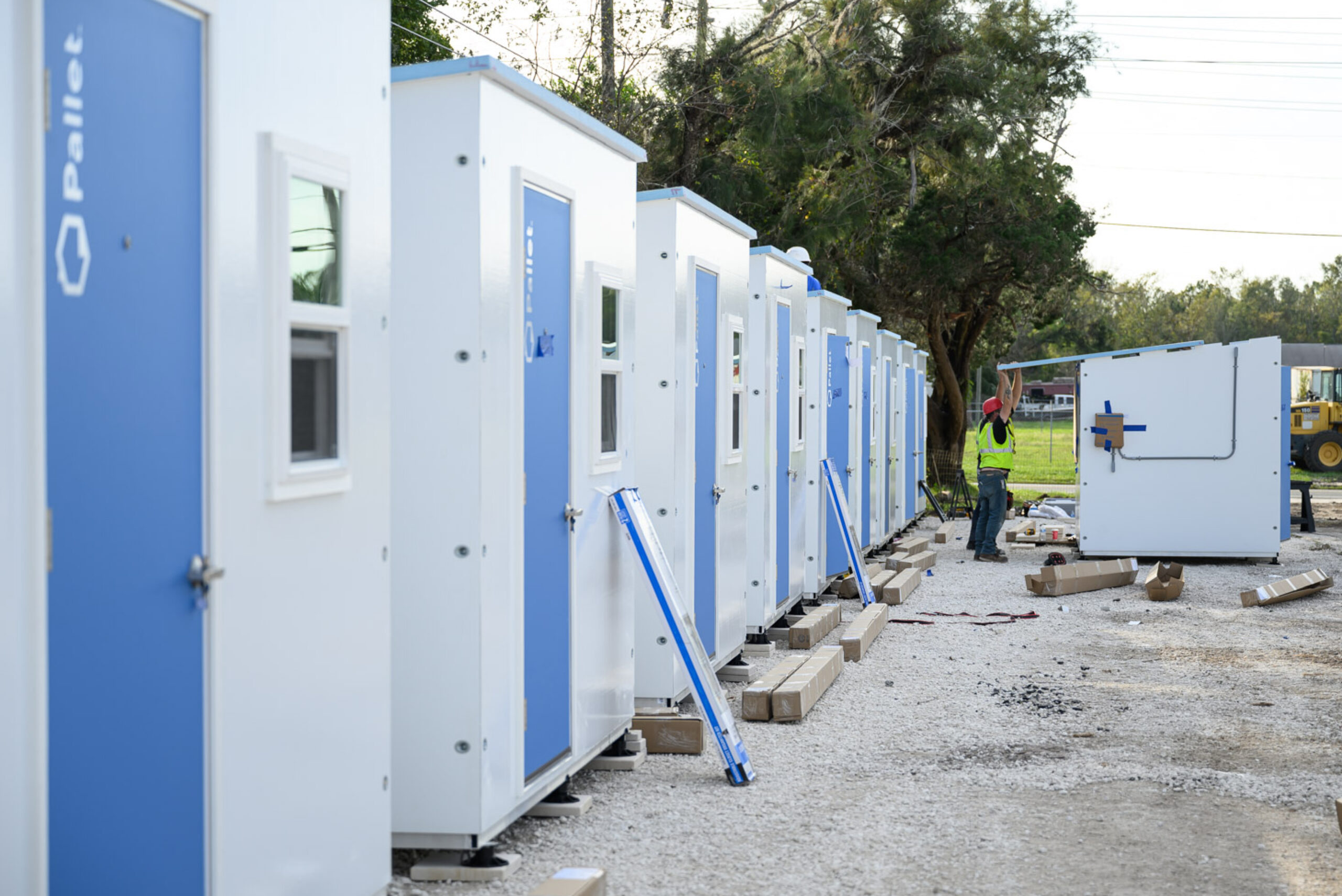Why rapid-response interim shelter is crucial
May 22, 2023

Homelessness is a matter of life and death. While providing permanent, stable housing is the ultimate goal to help people experiencing homelessness, there are many laborious steps between living outside and finding a place to finally call home. And there’s no time to spare.
Rapid-response shelter, specifically interim housing, fills this void and allows people to find stability and structure to take their next steps. Alongside social services, access to necessities like food, water, and transportation, and a safe, private environment in a community setting, this housing model is an essential component in the pursuit of ending unsheltered homelessness.
What is rapid-response interim shelter?
Interim shelters like those in Pallet villages are designed to be urgently deployed and provide private temporary shelter for individuals, couples, or families. “Rapid-response” simply means these shelters can be swiftly and affordably built to address the needs of unhoused individuals. “Interim” indicates that they are intended to act as a stepping stone for people to stabilize and take their next steps.
The low-barrier shelter village model allows residents to bring their personal possessions with them, and stay with their partners, family members, or pets that are often not permitted in other temporary shelter options. This approach offers the space and privacy for unhoused communities to recharge and plan for their future with access to wraparound services, and the chance to transition to permanent housing in a safe and dignified environment.
The power of community
Pallet is more than shelter: our village model is key for many residents to gain access to an ecosystem of support, become a part of a healing community, and successfully reintegrate.
When living in encampments, people rely on their neighbors for information and camaraderie. An abrupt transition from this environment to individual housing can in many cases lead to feelings of isolation and psychological distress. The chance to move into a private shelter in a communal setting means residents feel like part of something larger than themselves and has profound positive effects on mental health.
Going beyond housing means providing people with essential resources to be able to transition out of homelessness. These resources are ingrained in the Pallet shelter village model. Reliable access to food, water, hygiene facilities, and transportation, as well as individualized assistance in securing documents, obtaining health care, and finding a job are key in creating a living situation with a standard of dignity.
The service providers who operate Pallet shelter villages ensure that all residents have these tools at their disposal to make steps toward permanent housing.
Bridging the gap
Most would agree that housing is a human right. And while helping every person to find their permanent home is the aim, the streets cannot act as a waiting room while low-income and accessible developments are being constructed.
That’s why rapid-response interim shelter plays a critical role in bridging the gap. Providing immediate housing and services is an essential piece—Pallet shelter villages can be deployed with speed and can address cities’ particular homelessness emergencies at scale. While many permanent developments can take years to complete, each Pallet shelter can be assembled in under three hours with minimal tools.
Unhoused communities need shelter now. It’s time to recognize the urgency of going beyond permanent housing solutions—and allocate the time, effort, and funds to make rapid-response interim shelter a priority in ending unsheltered homelessness.


